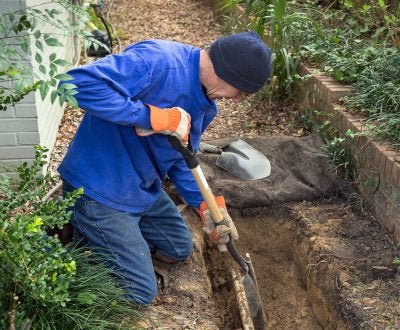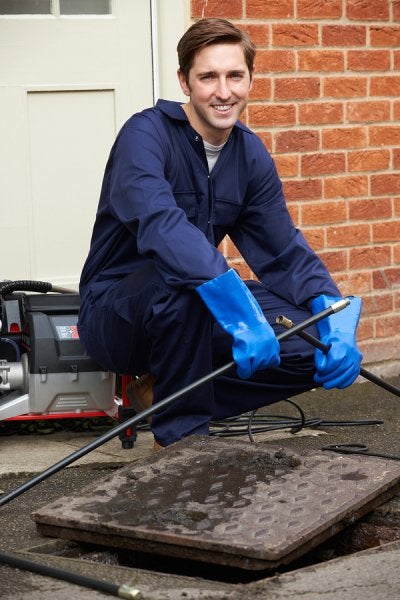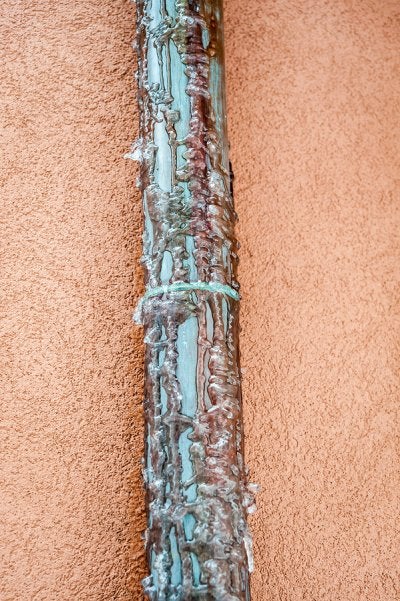-
Sewer Maintenance and Repair
When you experience a problem with your sewer line, fast repairs by professional plumbers are essential to avoid significant damage. Regular sewer service in Elmhurt, IL can help you avoid sewer problems or catch issues in their early stages, before they cause difficulties. Here is what you need to know about taking care of your sewer system and recognizing the signs of an impending sewer problem.

Sewer Maintenance
One common part of home maintenance people often overlook is their sewer line. This negligence can lead to costly backups and overflows that cause major damage to your home. Fortunately, there are things you can do to keep your sewer line in good working order. Never pour grease down any drain in your home, including the garbage disposal. If you don’t have a disposal, put drain traps over your drains to keep large pieces of food from falling down. Avoid flushing diapers, sanitary napkins, paper, and wet wipes down your toilet, even if the packaging says it is safe to do so. Don’t plant trees, bushes, or shrubs near your sewer line, as the roots could puncture the line and cause a failure. Regular pipe and drain cleaning can also help.
Sewer Repair
It is important to be aware of the symptoms of a sewer problem so that you can call a plumber as soon as possible. Multiple clogged drains are a major sign that a sewer failure could be coming. Although it is normal for one drain to become clogged, when more than one drain is clogged at the same time, your sewer line could be to blame, especially if drains that are seldom used get clogged. You may also notice water backing up into the drains when you flush the toilet. When you flush your toilet, bubbles may appear in the bowl as water tries to rush past a blockage. Any time your toilets don’t flush as efficiently as they used to and plunging them doesn’t help, your sewer line could be to blame and should be evaluated by a plumber.
-
Signs You May Have Broken Pipes
Broken pipes in Elmhurst are never fun to deal with. They can result in costly repairs not only from the emergency plumber , but also from contractors repairing water damaged areas of the house. Drywall, carpeting, and personal possessions can become damaged if a broken pipe leads to a flood or an unseen leak. If you suspect you have a broken pipe, call for plumbing services right away. Continue reading for a few key clues that you may have a broken pipe.

Clogged Drains and Toilets
A clogged drain or toilet every once in a while is not always a big deal, but if your drains are constantly backing up—or you have an immovable clog—then you may be looking at broken pipes. Often, your pipes may have finally cracked due to improper installation, insufficient materials, or tree roots. Call your emergency plumber, and get to the bottom of your pipe problem before it becomes a bigger issue.
Mold Growth
If you had frozen pipes, and they thawed out, you may start to see mold growth in your ceiling, walls, or basement. If you see this, then you know for sure you have a broken pipe or moisture entering your home. Your plumber can root out the cause of the leaky pipes; you should also consider calling for mold removal before your home or your health suffers further damages.
Extra Landscape Growth
A lesser-known symptom of broken pipes is when a portion of your outside landscape begins to flourish. Sewage can be a great fertilizer for plants and grass. If you see part of your yard looking green and lush, but you have not watered any more than usual, then you may be looking at a sewer repair.
Rodent and Insect Infestations
Rodents and insects are drawn to moisture, food, and rot. When you have a sudden infestation of rats or insects—especially cockroaches and drain flies—then you could be looking at a leaky or broken pipe that is attracting these annoying pests. After you call for plumbing services, be sure to call a professional exterminator.
-
Tips for Preventing Frozen Pipes
Even though the weather is heating up, you can never be too prepared for winter to arrive. As the cooler months start coming back, you need to keep your home from suffering frozen pipes near Elmhurst . There are a few ways you can keep your pipes from freezing this winter with preparation in the summertime.

Drain Nonessential Water Supplies
Before winter starts, you should be winterizing your home to protect from cold temperatures. Summer is the ideal time, because you will not have to worry about the occasional evening with freezing temperatures as you would in the fall. You should also be winterizing your summer appliances—such as the swimming pool, sprinklers, and garden hoses—as summer winds down to keep your pipes from potentially bursting. Open up these water lines and let them drain. Hoses may still have water present in them, so open the outside valve so any remaining water will not risk the pipes.
Insulate Exposed Water Pipes
One of the most important ways to prevent frozen pipes is to insulate them against the cold. If you have any exposed pipes outside the house, or in a cold basement, then look into different insulation materials. There are pipe sleeves and tape specifically meant to fully cover pipes against cold weather. These sleeves can be found at your local hardware store or with your plumbing services. Some homeowners, typically in milder climates, can protect their pipes with newspapers and plastic bags. These methods should only be used if you are in a pinch. Buy proper piping insulation as soon as you are able.
Keep the Heat Running
You want your heater running at certain temperatures and times of the day to keep your pipes from bursting. If you leave for vacation, keep your heater going while you are away. Though there will be no one there to enjoy the heat, you cut down on the risk of a frozen and broken pipe. Also, try to keep your heater consistent in temperature throughout the day and night. Your pipes can retain the benefit of the heater when the temperature drops at night.
-
Choosing New Plumbing Pipes
Most of the typical home’s plumbing system is out of sight; however, it should not be out of mind. When choosing piping for a new home or a renovation, it’s important that you know the different kinds and their advantages. This video from This Old House offers some insight.
Galvanized steel was the standard pipe for a long time, but today is only used for limited retrofitting. Most plumbers today use copper piping for more expansive projects. That said, the high cost of copper has led many to use PVC and CPVC plastic piping. Still others turn to multicolored PEX piping, which is inexpensive and very easy to install. This video also touches on various pipe fittings and methods used to create a water-tight seal.
RECENT POSTS
categories
- Uncategorized
- Plumbing Services
- Residential Plumbing
- Flood Control
- Pipe Repair
- Sewer Line
- Emergency Plumber
- Plumbing Leak
- General Plumbing
- Clogged Drains
- Frozen Pipes
- Property Damage
- Drain guard
- Copper Pipes
- Commercial Plumbing
- Elmhurst plumber
- plumbing system
- Burst Pipes
- Plumbing pipes
- Water damage
- Hydrojetting
- PVC and CPVC
- PEX
- garbage disposal
